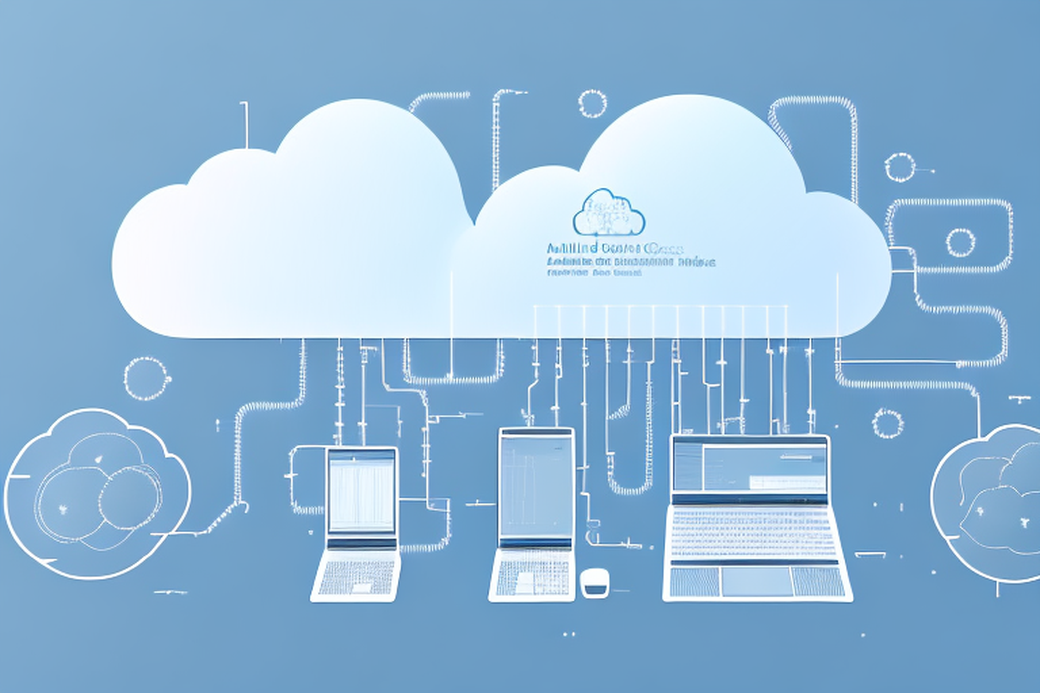Table of Contents
#Kubernetes RBAC Series
- Part 1: Introduction to Kubernetes RBAC
- Part 2: Understanding Kubernetes RBAC Components
- Part 3: The Complexity of Kubernetes RBAC
- Part 4: Top Reasons and the Impact of Kubernetes RBAC Complexity
- Part 5: Best Practices for Simplifying Kubernetes RBAC
Kubernetes is a powerful open-source container orchestration platform that has become ubiquitous in the world of cloud computing. One of the most important aspects of Kubernetes is role-based access control, or RBAC. RBAC is a critical component of Kubernetes security and access management, providing a way to manage who has access to the Kubernetes API and the resources it controls. In this article, we will explore the basics of Kubernetes RBAC, its role in Kubernetes security, and how it works. Brief Overview of Kubernetes RBAC
#Brief Overview of Kubernetes RBAC
Before we dive into the details of Kubernetes RBAC, let’s first define what it is. RBAC is a security model used by Kubernetes to allow or deny access to resources based on roles. Simply put, Kubernetes RBAC is a way to determine who can do what within a Kubernetes cluster. In Kubernetes, roles are assigned to users or groups, and these roles determine what actions they can take on a given resource. Roles can be defined at different levels, such as the cluster level, namespace level, or resource level.
RBAC is an essential component of Kubernetes security, and it provides a granular level of control over access to resources. With RBAC, you can ensure that only authorized users or groups have access to sensitive data or critical resources. This is particularly important in large organizations where multiple teams may be working on the same cluster, and access control is critical to maintaining the integrity of the cluster.
RBAC is not a new concept in the world of security. It has been used in operating systems and other applications for many years. However, Kubernetes RBAC is unique in that it is designed specifically for container orchestration. It provides a flexible and scalable way to manage access control in a Kubernetes cluster.
RBAC is based on the concept of roles and role bindings. A role is a set of permissions that define what actions can be taken on a resource. For example, you can create a role that allows a user to read a specific pod, but not delete it. Role bindings, on the other hand, associate a role with a user or group. This determines who has access to the resources defined in the role.
RBAC can be used to manage access control at different levels. At the cluster level, you can define roles and role bindings that apply to the entire cluster. This is useful for managing cluster-wide resources, such as nodes or persistent volumes. At the namespace level, you can define roles and role bindings that apply to a specific namespace. This is useful for managing resources that are specific to a particular application or team.
In conclusion, Kubernetes RBAC is a powerful tool for managing access control in a Kubernetes cluster. It provides a flexible and granular way to define roles and permissions, and it can be used to manage access control at different levels. With RBAC, you can ensure that only authorized users or groups have access to critical resources, and you can maintain the integrity of your Kubernetes cluster.
#The Role of RBAC in Kubernetes Security and Access Management
Kubernetes RBAC, or Role-Based Access Control, is a powerful tool that is essential for securing your Kubernetes cluster. With RBAC, you can define roles and permissions for different users and groups, ensuring that only authorized personnel can access and manipulate Kubernetes resources. This is especially important in today’s world, where cyber attacks are becoming increasingly sophisticated and frequent.
RBAC allows you to create a hierarchy of roles, with each role having specific permissions that determine what actions a user can perform within the Kubernetes cluster. For example, you can create a role that allows a user to view resources, but not modify them. Or you can create a role that allows a user to create new resources, but not delete them.
RBAC also enables you to enforce compliance with organizational policies. You can define roles with specific permissions that align with your company’s security standards, ensuring that all users adhere to these standards. This is particularly important for organizations that need to comply with regulations such as HIPAA or PCI-DSS.
In addition to providing security, RBAC gives you granular control over who can access what resources. You can assign different levels of access to different users and groups, depending on their role within the organization. This ensures that sensitive data and resources are only accessible to those who need them, and not to unauthorized personnel.
RBAC is an essential component of Kubernetes security and access management. By using RBAC, you can ensure that your Kubernetes cluster is secure, compliant, and accessible only to authorized users. So if you haven’t already implemented RBAC in your Kubernetes cluster, now is the time to do so!
#How Does Kubernetes RBAC Work?
At a high level, Kubernetes RBAC works by defining roles and role bindings. Roles specify a set of permissions, such as read, write, or delete, for a specific resource. For example, you could create a role that allows users to read and write to a specific deployment, but not delete it. Similarly, you could create a role that allows users to delete pods, but not create or modify them.
Role bindings, on the other hand, associate these roles with users or groups. This enables users or groups to perform specific actions on Kubernetes resources based on the roles they have been assigned. For example, you could create a role binding that associates the “read-write” role with a specific user, allowing them to read from and write to a deployment. Alternatively, you could create a role binding that associates the “delete” role with a specific group, allowing all members of that group to delete pods.
Additionally, Kubernetes RBAC supports both service accounts and user accounts, so you can manage both kinds of accounts with RBAC. Service accounts are used by pods to authenticate with the Kubernetes API server, while user accounts are used by humans or other systems to authenticate.
Roles and role bindings are defined using Kubernetes YAML files, which can be stored in a version control system like Git. This makes it easier to manage roles and role bindings across different environments and to track changes over time. Once a YAML file is created, it can be applied to a Kubernetes cluster using the kubectl command.
Overall, Kubernetes RBAC provides a powerful and flexible way to control access to Kubernetes resources. By defining roles and role bindings, you can ensure that users and groups have the right level of access to perform their jobs, while also maintaining security and compliance.
#Kubernetes RBAC in the Cloud
In addition to using RBAC on-premises, RBAC can also be used on cloud-based Kubernetes services like Google Kubernetes Engine (GKE), Amazon Elastic Kubernetes Service (EKS), and Microsoft Azure Kubernetes Service (AKS). These cloud providers provide RBAC as a managed service, making it easier to set up and manage RBAC across large-scale, distributed environments. By leveraging RBAC in the cloud, organizations can ensure consistent access controls across their Kubernetes clusters, regardless of where they are deployed.
One of the key benefits of using RBAC in the cloud is the ability to easily manage access controls for multiple Kubernetes clusters. With RBAC as a managed service, organizations can define roles and permissions once and apply them across all of their clusters. This greatly simplifies the management of access controls, reducing the risk of errors and inconsistencies.
Another advantage of using RBAC in the cloud is the ability to take advantage of cloud-specific features and integrations. For example, GKE provides integration with Google Cloud Identity and Access Management (IAM), allowing organizations to use their existing Google Cloud IAM roles and permissions to manage access to their Kubernetes clusters. Similarly, EKS integrates with AWS Identity and Access Management (IAM), providing a seamless experience for managing access controls across both Kubernetes and other AWS services.
RBAC in the cloud also provides enhanced security features, such as the ability to use network policies to control traffic between pods and enforce security policies at the network layer. This can help organizations better secure their Kubernetes clusters and reduce the risk of unauthorized access or data breaches.
Finally, by using RBAC in the cloud, organizations can take advantage of the scalability and flexibility of cloud-based Kubernetes services. With RBAC as a managed service, organizations can easily add or remove users and groups, adjust permissions, and manage access controls as their needs evolve over time.
In conclusion, RBAC in the cloud provides a powerful and flexible way to manage access controls across large-scale, distributed Kubernetes environments. By leveraging RBAC as a managed service, organizations can simplify the management of access controls, take advantage of cloud-specific features and integrations, enhance security, and scale their Kubernetes clusters as needed.
#Conclusion
In conclusion, Kubernetes RBAC is a critical component of Kubernetes security and access management. By using RBAC, organizations can manage who has access to Kubernetes resources and what they can do with them. RBAC provides granular access control, which is essential for securing large-scale, distributed Kubernetes environments. Whether on-premises or in the cloud, Kubernetes RBAC is a powerful tool that organizations can leverage to improve their Kubernetes security posture.
#Additional Articles You May Like
- Kubernetes Multi-tenancy and RBAC - Implementation and Security Considerations
- Kubernetes Multi-tenancy and RBAC - Management, Automation, Monitoring, and Auditing
- Kubernetes Multi-tenancy and RBAC - Advanced Scenarios and Customization
- Managing Kubernetes RBAC configurations with GitOps - Getting Started and Practical Example
- Managing Kubernetes RBAC configurations with GitOps - Monitoring, Auditing, Templates and Automation, Security Considerations
- Best practices for managing Kubernetes RBAC with GitOps
- GitOps + Kubernetes: Managing Kubernetes Secrets










